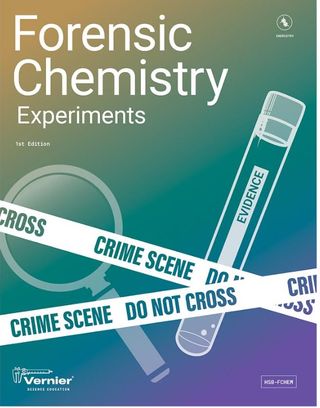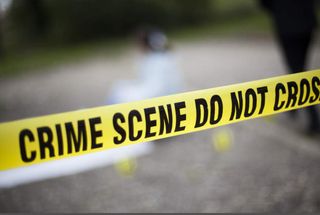Crime may not pay but incorporating crime scene-inspired lessons into chemistry STEM classes does, say Kemily Patillo and Nusret Hisim.
Hisim is a chemistry educational technology specialist of Vernier Science Education who helped develop Vernier’s new lab science book Forensic Chemistry Experiments.
Patillo is a science teacher at Newton College & Career Academy who has used crime scene-inspired teaching with her students. Both share tips for using crime scene scenarios to teach STEM students. These techniques can be so inspiring for students that not using them is almost, well, a crime.
Crime Scene STEM Scenarios

For decades procedural TV shows such as Forensic Files, CSI, NCIS, and many others have been fueling an interest in crime scene investigation. “Some of it is real, some of it’s not so real,” says Hisim of TV-show depictions of crime scene investigation.
Accurate or not, these shows have sparked an inherent interest in crime scene science for many students. Hisim first learned he could harness that appeal as a classroom educator in Maryland when he began building chemistry lessons around various crime scene scenarios. For example, in one lesson students investigated the case of an exploded bottle rocket and were tasked with determining whether someone ignored instructions not to over-pump the bottle.
“The actual concept behind that is you're adding equal volumes of gas, in this case air, to a container, and equal volumes of different gases with the same temperature and pressure contain an equal number of particles. That's Avogadro's Law,” Hisim says. “But you say it that way, there’s no interest from students. But if, you say, ‘Hey, if you pump up a bottle it can explode….’”
Teaching STEM Without Students Realizing It
Hisim’s teaching experience inspired Forensic Chemistry Experiments, which features 15 experiments designed for high school and college-level chemistry students.
“I took concepts that chemistry teachers teach,” Hisim says, including spectroscopy, atomic theory, and more. Then he worked with other educators at Vernier to shape TV crime-style investigations based on these. Cases/lab experiments featured in the book include Unusually Cool Beverage, Cold Case for Carbon Dioxide, Secret Message, Mystery Powder, and Arson Analysis.
“The idea behind the experiments is to make them interesting and enticing. Have a little scenario so that students feel like they're helping to solve a crime and in the background without really realizing it, they learned some chemistry,” Hisim says.
This type of inquiry-based process can also expand the lesson beyond chemistry alone. “They’re not only getting those science skills, they're building their critical thinking skills,” Patillo says.
Customizing Scenarios
While Forensic Chemistry Experiments provides educators with everything they might need, the labs are also designed to be customizable for educators who want to add their own twists.
The concept of using crime scene investigations to inspire chemistry lessons isn’t limited to the ideas in this book. Patillo was drawn to it because she has already incorporated similar techniques into her teaching. One lesson she teaches is "The Case of the Curious Pill." “It’s a murder mystery,” she says. “We start off with a scenario of a young lady complaining about a headache and her mom gives her an aspirin.” Soon after the young woman dies.
“Immediately the kids all think, it’s the mom – she gave her the wrong medicine, and so they’re using their critical thinking skills,” Patillo says. Students don’t learn the answer to the mystery until they’ve covered many different aspects of the unit, which takes about three weeks. During that time they learn a lot more than just the science at the heart of the case.
“They're learning to argue their case with their neighbors, how to present an argument properly. How to change your mind as you get new data. There's a lot of a lot of extra skills they’re learning on top of chemistry,” she says.


